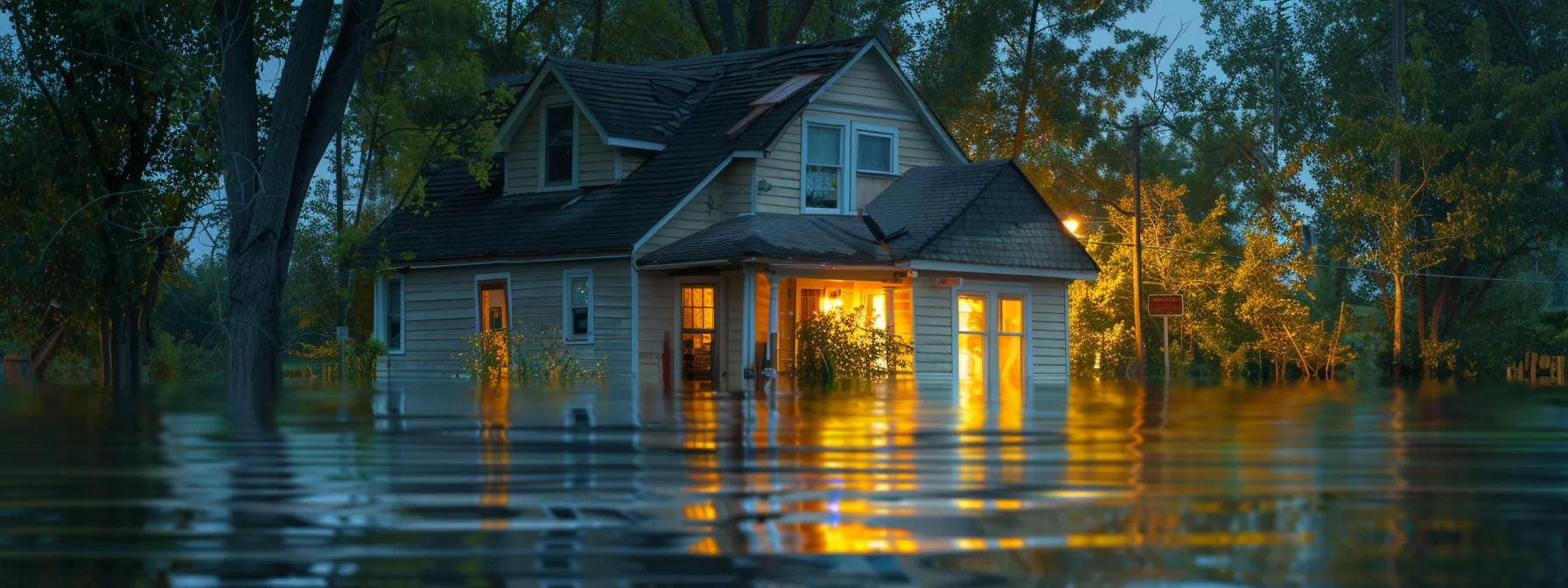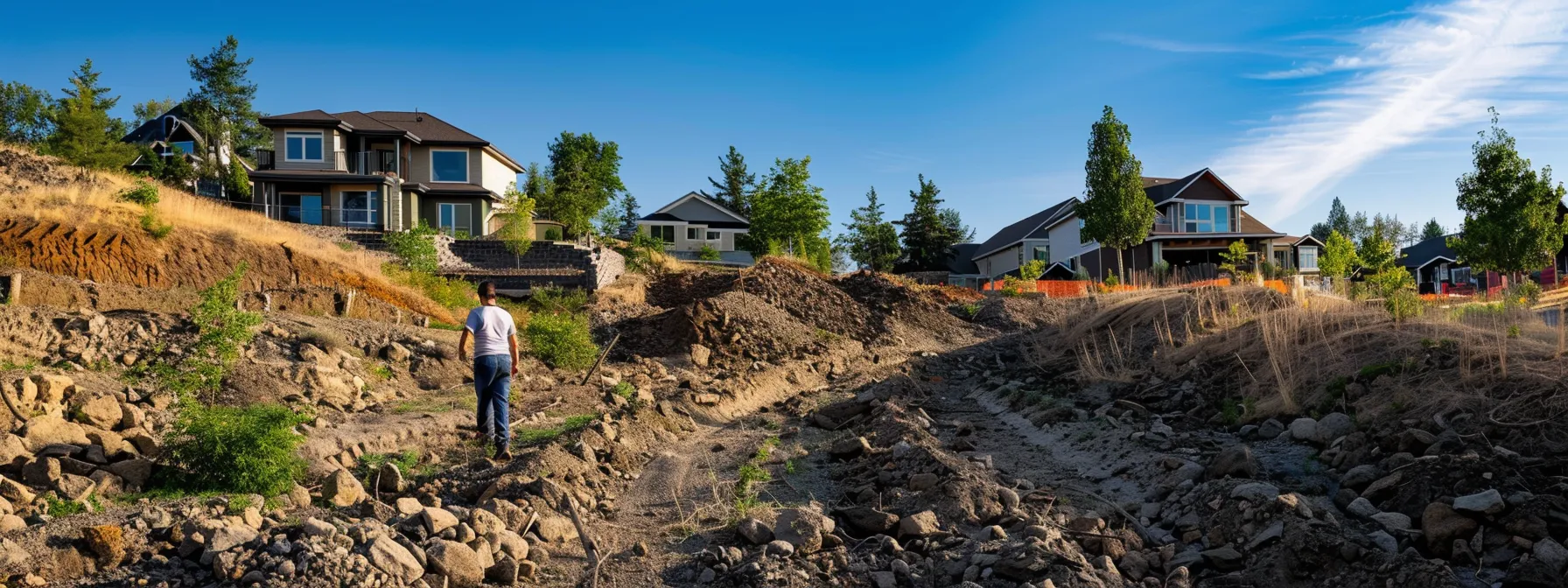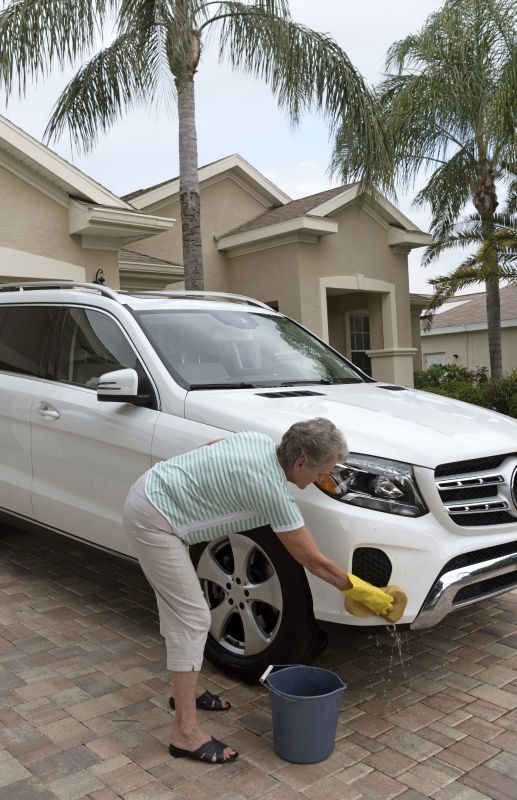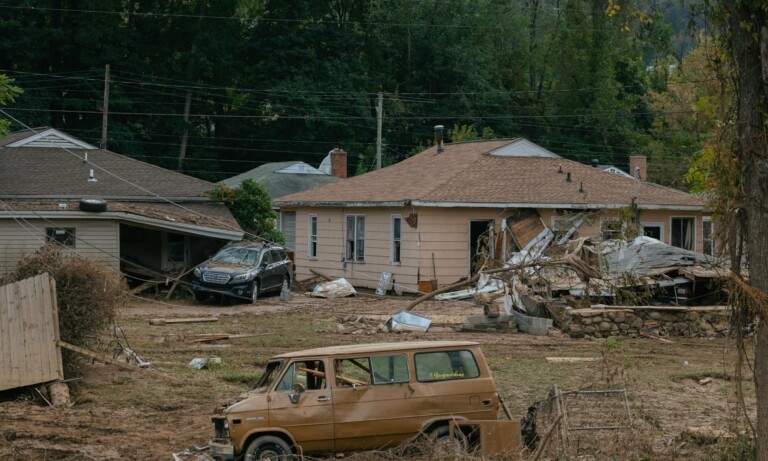Understanding AE Flood Zones: Risks and Implications
If your home lies within an AE flood zone, you’re in a region that the Federal Emergency Management Agency (FEMA) designates as a high-risk flood area.
The label ‘AE’ means you’re standing on some of the ground most likely to be submerged when the water rises, potentially influencing everything from your home’s value to the cost of insurance. Traditional home insurance policies won’t cover flood damage here, a fact that prompts many to seek specialized flood insurance to avoid staggering losses.
In this article, I’ll guide you through the essential measures and insurance strategies to shield your residence from the financial storms that flood waters can bring. Keep reading to arm yourself with the knowledge to navigate these turbulent waters with confidence.
What Does Being in an AE Flood Zone Imply?
Living in an AE flood zone means you reside in an area with a higher risk for flooding, as defined by the Federal Emergency Management Agency (FEMA). Your location is part of a floodplain, a region that has a one percent annual chance of flooding. If you own property here, it’s crucial to understand that water damage can be frequent and severe. Obtaining an elevation certificate is a significant step in assessing potential risks since it determines how your home’s elevation compares to the base flood elevation in the floodplain.
This information directly affects your insurance policy premiums, especially if you’re backed by the National Flood Insurance Program (NFIP). If floods are a concern, recognizing the inherent risks and how they influence your property is not just recommended, it’s essential for safeguarding your home and finances.
High-Risk Areas Explained
When your property falls within an AE flood zone like mine did, your mortgage lender typically mandates flood insurance as a condition of your home loan. It’s a safeguard for both you and the lender, ensuring that in the event of a flood, you’re financially protected. The cost of your policy is influenced by where your home sits on the Flood Insurance Rate Map (FIRM), a tool used by insurers to determine the risk level of specific areas.
Related Article: What is a Flood Zone AE
An elevation certificate often plays a pivotal role for homes in high-risk flood zones, as it is a critical document that maps out your property‘s elevation relative to the Base Flood Elevation (BFE). Insurance companies use this certificate to calculate your flood insurance premiums accurately, with higher elevations generally resulting in lower premiums due to reduced risk of flood damage.
Importance of Elevation Certificates in AE Zones
Securing an elevation certificate is a vital element for homeowners in AE flood zones. This document, vetted by the American Society of Civil Engineers, provides crucial information that outlines your property’s specific vulnerability to flood hazards. Armed with this, you’re better equipped to communicate with insurance agencies and make informed decisions on your flood insurance policy:
|
Property Feature |
Elevation Detail |
Policy Impact |
|
Home’s Lowest Floor |
Comparative Elevation to BFE |
Risk Assessment |
|
Foundation Type |
Elevation Certificate Data |
Premium Calculation |
|
Proximity to Nearest Body of Water |
Historical Data and Dam Information |
Flood Hazard Evaluation |
Without this certificate, you might face unnecessarily high premiums or insufficient coverage. Imagine facing a situation where a nearby dam leads to unexpected flooding, and your coverage falls short – the elevation certificate is there to minimize such hazards by ensuring your policy reflects the true risk to your property.
How Does This Affect Property Owners?
As a property owner in an AE flood zone, your responsibilities extend beyond typical home maintenance. Proper drainage systems become a focal point; they’re crucial in minimizing flood risk, particularly if you’re near a lake or other body of water. Consulting with a seasoned real estate agent who has expertise in these areas can prove invaluable in managing risk and making informed decisions about your property.
Access to up-to-date flood risk data is essential for community members living in AE flood zones. It influences decisions on where to buy property, how to protect existing investments and the community‘s overall preparedness for potential floods. This data shapes the myriad of choices you face to safeguard one of your most significant investments: your home.
|
Impact Area |
Elevation Certificate Requirement |
Homeowner Implication |
|
Insurance Premiums |
Mandatory for Accurate Assessment |
Financial Protection |
|
Property Value |
Reflects Risk to Buyers |
Real Estate Marketability |
Unpacking the Risks of AE Flood Zones
Residing in a special flood hazard area such as an AE zone exposes your home to frequent and sometimes severe flooding. This designation amplifies the importance of understanding the flooding risks that loom over your property. As flood frequency and severity become pressing concerns, it is imperative for you to protect your home and assess the potential for property damage.
The risk rating assigned to your home affects not only your peace of mind but also the financial aspect of homeownership—namely, your insurance premiums. These factors underscore the need for a robust defense against the whims of nature, and in some cases, the presence of a levee may offer a false sense of security unless it’s coupled with appropriate insurance and precautionary measures.
Flood Frequency and Severity in AE Zones
As an AE flood zone resident, you’re subject to a higher likelihood of flooding, where factors like storm surge and heavy rainfall can significantly impact your community. Understanding the emergency management protocols and appropriate construction measures for your area is vital in mitigating these risks. Local authorities, recognizing these zones’ susceptibility to natural disasters, often implement stringent building codes and community planning requirements.
|
Consideration |
Emergency Management |
Construction Adaptations |
Community Impacts |
|
Frequency of Floods |
Evacuation Routes |
Elevated Structures |
Infrastructure Strain |
|
Severity of Storm Surge |
Disaster Response Plans |
Breakaway Walls |
Property Damage Potential |
When considering insurance options, diving into the FAQ sections provided by insurers can shed light on critical aspects like deductible variability and coverage extents during a flood event.
Priority should be given to understanding these details as they will influence how much you could pay out-of-pocket in the aftermath of a flood. Given the unpredictable nature of flooding in an AE zone, having transparent information helps prepare you for any emergency management scenarios.
Property Damage Concerns
Your prospects for employment and the stability of the local economy can become jeopardized when your community is frequently ravaged by floods, particularly if you’re in an AE zone along the coast. Fluctuations in property values after flood events could influence everything from loan eligibility to investment decisions within your zip code.
Living near the coast means being at the forefront of rising sea levels, an issue that amplifies the impact of floods in AE zones. It’s important that you account for this progressive risk as it can lead to substantial property damage over time, potentially affecting not just your home but also your long-term financial health.
Impact on Insurance Premiums
The presence of a basement in your home situated within an AE flood zone can notably alter your insurance premiums. This single feature may heighten your risk profile, potentially boosting the cost of your coverage due to the increased likelihood of incurring damages during a flood.
Every relevant document, such as an elevation certificate, directly informs the calculation of your insurance premiums. With precise data illustrating your home’s flood risk, you’re better positioned to navigate the real estate market and manage your finances in the face of potential property damages.
|
Home Feature |
Insurance Consideration |
Premium Impact |
|
Presence of Basement |
Increased Risk of Damages |
Higher Premiums |
|
Elevation Certificate |
Documented Flood Risk Data |
Adjusted Premium Calculation |
Steps to Safeguard Your Property in an AE Zone
Residing in an AE flood zone compels you to take a proactive stance on flood preparedness. Assessing your flood risk begins with grasping the geography and hydrology surrounding your property, granting you valuable foresight into the potential hazards you face. Implementing mitigation measures can range from fortifying your home’s structure to landscaping techniques that enhance water runoff.
Choosing the right flood insurance policy, on the other hand, requires scrutinizing policy details to ensure adequate coverage without overpayment. These steps not only protect your home but also preserve your peace of mind against the threat of floodwaters.
Understanding Your Flood Risk
If you live in an AE flood zone, accept that your property is in a high-risk area and become well-versed in the local topography. Understanding how elevation and proximity to water bodies could affect your property will enable you to evaluate the extent of flood intervention needed to protect your home.
Gather detailed information about historical flood events and current floodplain boundaries from FEMA’s Flood Map Service Center or your local government. This critical insight allows you to identify vulnerabilities and customize a protection plan that incorporates both structural defenses and appropriate insurance coverage.
Mitigation Measures to Consider
To diminish the risk of flood damage in an AE zone, consider making structural modifications to your home. Elevating your home above the established Base Flood Elevation is a significant step that can drastically reduce the likelihood of flood waters reaching your living spaces.
A cornerstone of flood mitigation is a thorough evaluation of your property‘s drainage system. Ensuring that water is effectively channeled away from your foundation can prevent pooling around your home’s perimeter, safeguarding your basement and lower levels from potential water intrusion:
|
Modification |
Effectiveness |
Consideration |
|
Home Elevation |
High |
Prevents Direct Flood Damage |
|
Drainage Improvement |
Medium to High |
Reduces Surface Water Risk |
Selecting the Right Flood Insurance
Choosing the appropriate flood insurance requires careful analysis of policy options available to you as a homeowner. Consider policies offered through the NFIP as well as private insurers, evaluating coverage limits, exclusions, and the claims process to find a balance that fits both your risk profile and budget. Flood Insurance
Scrutinize the details in potential policies; pay special attention to the coverage of personal belongings versus structural components of your home. This distinction is critical: it affects your out-of-pocket expenses in the event of a flood and determines how effectively your insurance safeguards your investment.
|
Policy Feature |
Evaluation Factor |
Homeowner Action |
|
Coverage Limits |
Does it match property value? |
Compare against home’s worth |
|
Exclusions |
What’s not covered? |
Assess need for additional riders |
|
Claims Process |
Ease and responsiveness |
Research insurer’s track record |
AE Flood Zones and Real Estate Transactions
Stepping into the world of AE flood zone real estate demands transparency and caution. As a seller, you’re obliged to disclose the flood risks to potential buyers, which includes sharing any knowledge of the property‘s flood history and current flood zone classification. If you’re a buyer, conducting thorough due diligence becomes your responsibility; it’s imperative to investigate and understand the flood risks associated with your prospective home.
Furthermore, recognizing the integral role of flood insurance is crucial for both parties. It not only influences the transaction from a financial standpoint but also reflects the long-term commitment to protecting the property.
Disclosure Requirements for Sellers
If you’re selling a property in an AE flood zone, full disclosure is not just a legal responsibility—it’s an ethical one. It’s vital that you inform potential buyers of the flood risk by highlighting the property’s FEMA flood zone designation and furnishing them with any existing elevation certificates or flood insurance history. selling properties in a flood zone
Be aware that your candor regarding the property‘s flood zone status could influence sale negotiations. However, transparency fosters trust and ensures compliance with state disclosure laws, potentially minimizing legal repercussions and paving the way for a smoother transaction.
Due Diligence for Buyers
As a buyer considering a home in an AE flood zone, you’re faced with the imperatives of research and preparedness. It’s in your best interest to evaluate the property‘s flood zone implications, such as potential insurance rates and risks, before making a commitment.
Ensure you obtain a current elevation certificate, assess the home’s flood history, and understand the implications of the area’s flood plain management policies. Doing so will arm you with the necessary insight to navigate the complexities of flood zone property acquisition responsibly.
The Role of Flood Insurance in Transactions
Flood insurance often becomes a pivotal point of discussion during real estate transactions in AE flood zones. As the buyer or seller, you must weigh the cost and coverage of different flood insurance policies, as they could significantly affect the property‘s market value and the attractiveness of the deal.
Before finalizing a property sale, you should verify the availability and terms of flood insurance since this can influence the long-term affordability and desirability of the home. Understanding the specifics of the policy ensures that the property remains protected, and the responsibilities of both parties are clear, mitigating the risks associated with living in a high-flood area.
Navigating Insurance Requirements in AE Flood Zones
If your home sits in an AE flood zone, you confront mandatory insurance purchase requirements, protecting both your investment and future peace of mind. Unraveling the complexities involved in selecting the right flood insurance policy need not be intimidating if you know where to look and what to consider. Adequate coverage is a cornerstone of your financial strategy against floods, so it’s worth learning how to streamline your insurance expenses.
Meanwhile, familiarize yourself with options like the National Flood Insurance Program (NFIP), which offers federally backed policies, and private flood insurance carriers that might provide more flexible or extensive coverage. Lastly, keep an eye out for strategies to trim your insurance premiums without compromising on security. Understanding each of these aspects will steer you toward making informed, cost-effective decisions tailored to your property‘s unique flood risk.
Mandatory Insurance Purchase Requirements
If your home falls within an AE flood zone, your mortgage lender will likely insist on flood insurance as a prerequisite for loan approval. This is a non-negotiable requirement designed to protect your property from flood-related losses and safeguard the lender’s financial interest in your home.
It’s crucial to recognize that securing flood insurance in these high-risk areas is not merely advisable but, under most circumstances, legally mandated. This requirement reflects the stark reality of living with a significant risk of flooding, ensuring you’re not left defenseless against nature’s unpredictability.
How to Find Adequate Coverage
Identifying appropriate flood insurance for your home in an AE flood zone begins with comparing policy offerings from both the National Flood Insurance Program (NFIP) and private insurers. Assess the fine print regarding coverage limits, deductibles, and exclusions to ensure the policy you choose meets your risk exposure and budgetary constraints:
|
Insurance Aspect |
Consideration for AE Zone Coverage |
|
Policy Provider (NFIP vs. Private) |
Evaluate the advantages of federal backing against flexibility of private insurers. |
|
Coverage Limits |
Ensure they are aligned with the rebuild value of your home and possessions. |
|
Deductibles |
Opt for a deductible that balances manageable out-of-pocket costs with premium savings. |
|
Exclusions |
Clarify what events or items are not covered to avoid gaps in your protection. |
Consult with an insurance agent who specializes in flood policies to navigate the complexities of insuring a property in a high-risk flood zone. Their expertise can reveal opportunities for discounts, such as elevating your property or installing certain flood prevention devices, ensuring you secure comprehensive flood coverage while managing costs effectively.
Tips for Lowering Insurance Costs
You have the ability to influence your flood insurance costs even when living in an AE flood zone. One way to potentially lower your premiums is to improve your home’s resistance to flood damage through various mitigation efforts, like installing flood vents or regrading your property to direct water away more effectively.
Another effective strategy could be to increase your deductible, which can result in lower monthly payments. Always ensure this aligns with your financial capacity to manage higher out-of-pocket costs in the event of flood damage. It’s a careful balance of risk and financial planning that can make your coverage more affordable over time.
National Flood Insurance Program
The National Flood Insurance Program (NFIP) stands as your primary defense in mitigating the financial impact of flooding within AE zones. Unique in its scope, the program offers residents federally guaranteed coverage, providing a safety net that private insurance alone may not extend.
Engaging with the NFIP means tapping into a wealth of resources designed to help you understand flood risks and align the level of coverage with your specific situation. It’s a fundamental step toward securing peace of mind, knowing that even amidst the unpredictability of floods, your home’s protection is built on solid ground.
Private Flood Insurance
Delving into private flood insurance as a homeowner in an AE flood zone offers a layer of customization that federal programs might not provide. You have the freedom to tailor your coverage limits and deductibles to suit your property‘s value and your personal risk tolerance, potentially leading to greater peace of mind.
Keep in mind that working with private insurers might also afford you quicker claim settlements and additional coverage options that go beyond the standard protections. This route demands careful scrutiny of the insurer’s reliability and claims process to ensure that your investment remains secure in the face of unpredictable flooding.
Coping With the Implications of AE Flood Zones
Living in an AE flood zone comes with its own set of challenges, but you’re not in it alone. Community and government support programs are available to provide aid and information that can guide you in fortifying your home against floods. It’s essential to utilize flood maps effectively; they’re a critical resource for future planning and risk assessment in your area. Building a resilient community relies heavily on collective efforts—educating one another, improving infrastructure, and advocating for better flood management. These pivotal steps ensure that when the waters rise, your community isn’t just prepared to weather the storm, but can recover and thrive afterward.
Community and Government Support Programs
As a resident in an AE flood zone, you have access to various community and government support programs designed to assist with flood mitigation and recovery efforts. Local government initiatives often include grants for improving flood defenses, while federally funded programs may offer financial aid for both before and after a disaster strikes.
Engage with your local floodplain administrator to gain insight into community-level projects and educational resources that can help you better protect your property. Moreover, the Federal Emergency Management Agency (FEMA) provides guidance and funding through the National Flood Insurance Program (NFIP), ensuring you have reliable insurance support tailored to the challenges of AE zones.
Leveraging Flood Maps for Future Planning
Future planning in an AE flood zone hinges on the effective use of flood maps. By regularly consulting updated maps from FEMA’s Flood Map Service Center, you gain insights into changes in floodplain boundaries, which helps in making astute decisions about property enhancements and insurance needs.
Use flood maps to assess how proposed community developments or natural changes may influence local hydrology. This proactive approach ensures that any alterations to your property or insurance plans are informed by the most current and accurate flood risk data available.
Building a Resilient Community
You play a vital role in fostering resilience in your AE flood zone community. By engaging with neighbors and actively participating in local planning meetings, you contribute to a collaborative front against flood-related adversities, ensuring shared resources and information bolster community strength.
Advocacy for effective flood management strategies characterizes a resilient community. Through collective action, including pushing for infrastructure improvements and backing flood mitigation policies, you and your fellow residents create a safer environment where preparedness is a communal priority.
Changing AE Flood Zone
Discovering that your home lies in an AE flood zone may prompt you to investigate strategies for removing or altering this designation. One potential avenue is a Letter of Map Amendment (LOMA), a formal document issued by FEMA acknowledging a property‘s placement on naturally elevated land that is above the BFE and therefore might not be at risk. The intricate process of a flood zone change can be initiated by property owners and involves providing substantial evidence of the property‘s elevation in relation to the BFE.
Successfully navigating this process does not just confer an amelioration of the perceived flood risk, but can also be financially advantageous, potentially reducing flood insurance premiums and enhancing the property‘s value. In exploring these options, you take proactive control over your property‘s classification and, by extension, its insurance requirements and long-term financial outlook.
Letter of Map Amnendment
A Letter of Map Amendment (LOMA) is your beacon when seeking to redefine your property‘s flood risk as recognized by FEMA. If your home’s elevation, as proven by an elevation certificate, lies above the BFE, a LOMA could officially alter your flood zone status, potentially freeing you from the requirement to carry flood insurance.
Securing a LOMA involves meticulous documentation and often a surveyor’s certification attesting to your property‘s true elevation. Upon successful review and acceptance by FEMA, obtaining a LOMA can lead to meaningful reductions in your flood insurance premiums, confirming that your due diligence can translate into tangible financial benefits.
Flood Zone Change Process
Embarking on the flood zone change process calls for a methodical approach. You begin by filing an application with FEMA for a Letter of Map Amendment (LOMA) or Letter of Map Revision Based on Fill (LOMR-F), along with the necessary supporting documentation, including an accurate elevation certificate and, often, a professional survey.
Following submission, FEMA reviews the provided evidence to determine if the property‘s location or elevation has been properly identified on the current map. If the review favors your case, FEMA will issue a document that revises the flood zone designation, offering relief from mandated flood insurance requirements and possibly lowering your insurance rates.
Flood Zone Change Benefits
Altering your home’s designation from an AE flood zone through a LOMA or LOMR-F not only reflects accurate topography but also serves as a catalyst for substantial insurance savings. It’s an adjustment that can decrease your flood insurance premiums, effectively lowering your overall housing costs.
Success in changing your flood zone classification elevates your home’s marketability, potentially enhancing its resale value. This is a strategic move that can benefit you long-term, distinguishing your property in a competitive real estate market:
|
Aspect |
Benefit |
|
Insurance Savings |
Lower premiums and housing costs |
|
Property Value |
Increased marketability and potential resale value |
Conclusion
Understanding AE flood zones is crucial as they signify a high risk of flooding, with both environmental and financial consequences for homeowners.
Acquisition of an elevation certificate and assessment of flood risks inform better decisions regarding property enhancement and insurance coverage. Appropriate insurance, whether through the NFIP or private carriers, serves as a necessary financial safeguard against potential flood damage.
Ultimately, proactive measures in community engagement, property fortification, and insurance management promote resilience and security in the face of flood-related challenges.
Information contained on this page is provided by an independent third-party content provider. This website make no warranties or representations in connection therewith. If you are affiliated with this page and would like it removed please contact editor @producerpress.com


-1.png?width=1280&height=720&name=NEW%20Thumbnail%20(9)-1.png)












